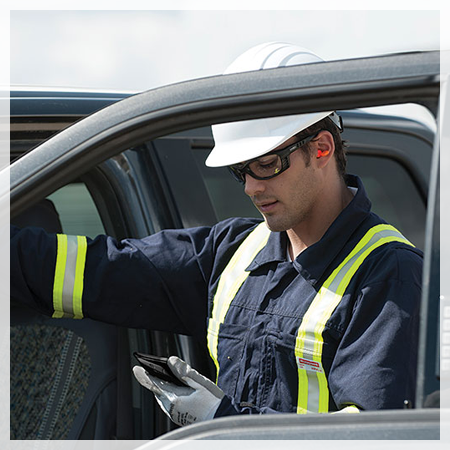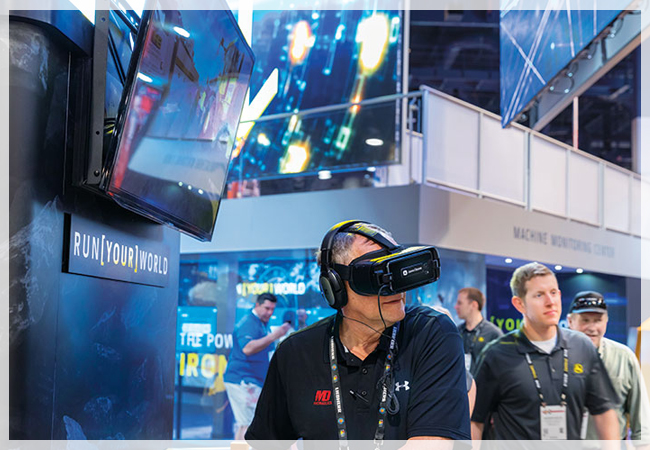Currency
April 12, 2018

Safety managers must ensure that workers of all ages stay safe. However, millennials — those born between 1982 and 1997, and expected to make up half the world’s workforce by 2020 — pose a special challenge.
Because of their relative lack of seniority, millennials may be relegated to less desirable jobs, or to temporary assignments. This means that they may suffer from a deficit of training. To make matters worse, their lack of experience may mean they have not yet had time to develop a healthy respect for all the safety risks presented by their working environments. It’s not surprising that millennial workers appear to suffer more workplace injuries than other age groups. In hazardous industrial environments, the risk could be even greater.
However, there’s hopeful news. The simultaneous arrival of new safety technologies may well render this tech-savvy generation surprisingly easy to “sell” on safe job site habits.
Millennial workers (like many of their older counterparts) often lack the patience to page through a paper manual. But smartphones or tablets definitely hold their attention, via instant access and simple, intuitive interfaces.
So manufacturers increasingly offer smartphone apps to accompany leading safety equipment. For example, devices are documented in on-demand mobile training apps — with graphic simulations of their use and safety features. These can be downloaded and displayed on iOS or Android phones with a few swipes of the worker’s thumb.
Another recent development in training technology: virtual reality (VR) education. It’s an experience that millennials especially seem to enjoy. Workers can now don a VR helmet or goggles, and perhaps gloves, to practice safe working procedures in an immersive 3D space. This can strengthen the muscle memory of performing actions correctly, while the realism and emotional impact of an exciting VR experience helps fix the lesson in memory for the long term.

The YouTube approach isn’t just for pop music and sneezing pandas. Employers and equipment makers are turning to live video recordings to reach workers such as millennials, who consult real-time video tutorials for instruction in many other facets of life. So why not for on-the-job safety?
Tasks such as engaging a machine’s safety governor; snapping a fall harness onto a guiderail; choosing the right welding glasses; correctly fitting and using hearing protection; or running through a safety checklist may be recorded live, via camcorder or even smartphone. Commentary explaining the action step by step can be voiced on the spot, or added later. This capability contributes a flexibility and immediacy that few other training methods share. Connected worker benefits
Connectivity technology further enhances the safety of the modern worker. Manufacturers who embed scannable RFID chips, sensors and other connected elements into their safety harnesses, wearable gas detectors, gloves, and other personal protective equipment (PPE) thus create smart PPE. Using cloud-based data transmission and storage, real-time information can be collected from an entire ecosystem of PPE and made available to stakeholders across the enterprise.
At a minimum, a smartphone or tablet can then be used to ascertain any given PPE item’s serial number. But many manufacturers today also make provision for a scan to reveal additional data.
Users can soon expect to see even more advanced adoptions of millennial-friendly safety technologies.
Augmented reality (AR) — which now allows gamers to visualize Pokemon Go characters within real-world environments — could “float” task-specific information or checklists right in front of workers, adding a dimension beyond VR safety training. More generally, apps and touchscreens should proliferate, making safety measures easier to access and execute for all workers. These technologies will connect to more — and even more innovative — implementations of smart PPE and connected safety software.
For example, wireless near field communication (NFC) capabilities — which allow a card or smartphone to establish ID when waved within 4 cm of a terminal — could be added to eyewear, fall protection gear, hardhats, etc. So workers could access each item’s maintenance/replacement dates, or where it can/should be worn in the plant. Another advance: wearable micro-sensors could let managers continually monitor every worker’s health and safety variables. These might include noise levels, radiation exposures, and perhaps even posture or acceleration impacts.
In the slightly longer term, look for voice recognition and artificial intelligence to further transform the safety space. In the coming years, all these technologies should help guide today’s millennials into a significantly safer working world.
Because of their relative lack of seniority, millennials may be relegated to less desirable jobs, or to temporary assignments. This means that they may suffer from a deficit of training. To make matters worse, their lack of experience may mean they have not yet had time to develop a healthy respect for all the safety risks presented by their working environments. It’s not surprising that millennial workers appear to suffer more workplace injuries than other age groups. In hazardous industrial environments, the risk could be even greater.
However, there’s hopeful news. The simultaneous arrival of new safety technologies may well render this tech-savvy generation surprisingly easy to “sell” on safe job site habits.
The appeal of the app
Millennial workers (like many of their older counterparts) often lack the patience to page through a paper manual. But smartphones or tablets definitely hold their attention, via instant access and simple, intuitive interfaces.
So manufacturers increasingly offer smartphone apps to accompany leading safety equipment. For example, devices are documented in on-demand mobile training apps — with graphic simulations of their use and safety features. These can be downloaded and displayed on iOS or Android phones with a few swipes of the worker’s thumb.
The virtues of VR
Another recent development in training technology: virtual reality (VR) education. It’s an experience that millennials especially seem to enjoy. Workers can now don a VR helmet or goggles, and perhaps gloves, to practice safe working procedures in an immersive 3D space. This can strengthen the muscle memory of performing actions correctly, while the realism and emotional impact of an exciting VR experience helps fix the lesson in memory for the long term.

The advantage of video
The YouTube approach isn’t just for pop music and sneezing pandas. Employers and equipment makers are turning to live video recordings to reach workers such as millennials, who consult real-time video tutorials for instruction in many other facets of life. So why not for on-the-job safety?
Tasks such as engaging a machine’s safety governor; snapping a fall harness onto a guiderail; choosing the right welding glasses; correctly fitting and using hearing protection; or running through a safety checklist may be recorded live, via camcorder or even smartphone. Commentary explaining the action step by step can be voiced on the spot, or added later. This capability contributes a flexibility and immediacy that few other training methods share. Connected worker benefits
Connectivity technology further enhances the safety of the modern worker. Manufacturers who embed scannable RFID chips, sensors and other connected elements into their safety harnesses, wearable gas detectors, gloves, and other personal protective equipment (PPE) thus create smart PPE. Using cloud-based data transmission and storage, real-time information can be collected from an entire ecosystem of PPE and made available to stakeholders across the enterprise.
At a minimum, a smartphone or tablet can then be used to ascertain any given PPE item’s serial number. But many manufacturers today also make provision for a scan to reveal additional data.
The face of the future
Users can soon expect to see even more advanced adoptions of millennial-friendly safety technologies.
Augmented reality (AR) — which now allows gamers to visualize Pokemon Go characters within real-world environments — could “float” task-specific information or checklists right in front of workers, adding a dimension beyond VR safety training. More generally, apps and touchscreens should proliferate, making safety measures easier to access and execute for all workers. These technologies will connect to more — and even more innovative — implementations of smart PPE and connected safety software.
For example, wireless near field communication (NFC) capabilities — which allow a card or smartphone to establish ID when waved within 4 cm of a terminal — could be added to eyewear, fall protection gear, hardhats, etc. So workers could access each item’s maintenance/replacement dates, or where it can/should be worn in the plant. Another advance: wearable micro-sensors could let managers continually monitor every worker’s health and safety variables. These might include noise levels, radiation exposures, and perhaps even posture or acceleration impacts.
In the slightly longer term, look for voice recognition and artificial intelligence to further transform the safety space. In the coming years, all these technologies should help guide today’s millennials into a significantly safer working world.









